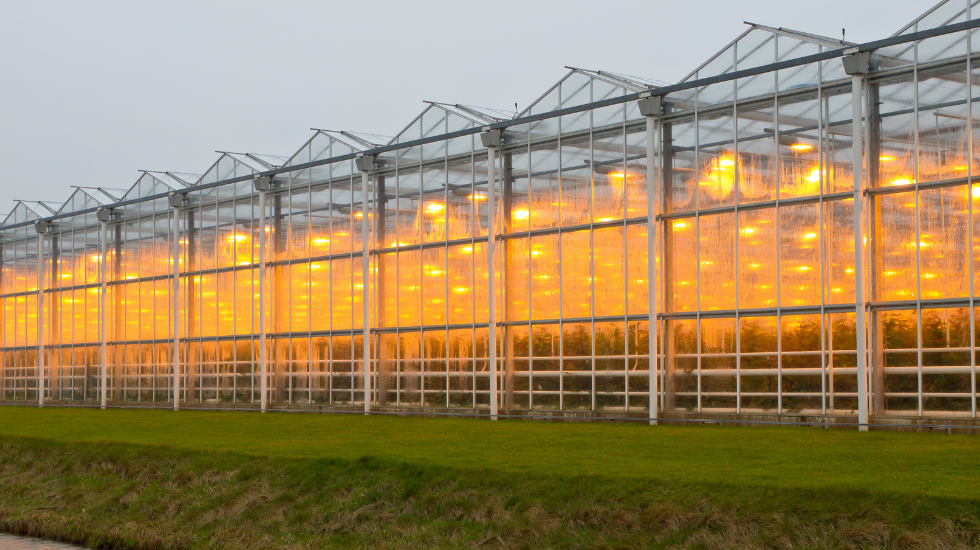Blog Layout
Indoor, Outdoor, or Greenhouse: Deciding Where To Grow Commercial Cannabis

Whether you've obtained your cannabis cultivation license or are just starting to conduct research, deciding how and where to grow commercial cannabis for your business is one of the most critical executive decisions. There are benefits and challenges to each methodology for growing, but your specific circumstances, resources, budget, and location will help dictate the overall direction. Determining how and where to grow is complicated by state and local cultivation regulations, zoning laws, available municipality services, and affordable real estate.
Here is a basic overview of indoor, outdoor, and greenhouse growing options to help point you in the right direction.
Indoor Growing
Setting up your commercial cannabis grow operation indoors has its advantages, the first being primarily in control of the environment. You can harvest cannabis all year round, providing an opportunity to increase overall yields and profits. While harvesting multiple times a year is ideal, the lighting, climate control, and automation equipment required to grow indoors can be a substantial upfront investment. Growing cannabis indoors has a larger carbon footprint than the alternatives with enormously high energy consumption.
While upfront costs are higher for automation equipment, most indoor growers see some benefits in reduced labor costs. With automated equipment handling labor-intensive tasks like feeding, you'll need less staff on hand.
Designing a climate-controlled environment creates a barrier to entry for harmful pests, negating the need for costly and toxic pesticides. This is especially true if you're considering growing with hydroponics. The lack of soil (which is where some pests lay eggs) can provide an opportunity to eliminate the need for pesticides.
Growing indoors also presents a more secure environment, preventing any opportunity for theft or animal damage, assuming you're taking precautions with a basic security system and robust locks.
While some jurisdictions may require indoor growing, you'll need to research local regulations and available services. If you can't get the necessary power and water lines and capacity into your building, or if there's no natural gas accessible, then you may need to keep searching.
Outdoor Growing
According to their website, the International Cannabis Farmers Association advocates for outdoor, sun-grown cannabis only, claiming that there's overwhelming evidence to support its superiority. And while there are plenty of consumers who agree with that assessment, growing outdoors isn't always an option. So let's examine the benefits and disadvantages of growing outdoors.
One advantage is that it's cheaper than its alternatives. Using the natural light of the sun negates the need for costly grow lights and expensive energy bills. Based on that alone, growing outdoors leaves a much smaller carbon footprint, a significant advantage. And while many claim that it's more sustainable than indoor growing, most who make those claims don't bring up the fact that cannabis grown outside requires heavy pesticide use. Not something most people want to inhale with the final product.
Another claim by outdoor growers is that yields are larger when grown outdoors. Without constraints on height, outdoor cannabis can grow over 6 feet tall with massive buds. And while overall yields may be higher, growing outdoors means that dust and dirt particles make their way into trichomes, degrading taste and overall quality. Larger buds can also suffer from bud rot from holding moisture overnight, allowing the fungus to form, resulting in the loss of 25% of your potential harvest.
Security is another major concern for growing outdoors. Not just from people wanting to steal your crops, but animals can also pose a risk; deer, rabbits, and raccoons will dig, snack, and trample plants.
Another detractor from growing outdoors is the amount of resource waste. If the climate in your region is dry, you'll waste a great deal of water making sure your plants are fed.
The bottom line is that if you're in Hawaii, growing outdoors is a great option. However, if you're in Michigan, or Connecticut you may need to consider other options. It's also critical that you check your state's cultivation requirements as every state is different. Some don't allow outdoor growing, and others require indoor growing.
Greenhouse Growing
Potentially the best of both worlds, growing cannabis in a greenhouse provides exceptional advantages. You get the benefit of natural sunlight, and it is typically much less expensive than indoor growing. Many commercial cultivars create hybrid greenhouses that take the best of indoor and outdoor growing. Alternative lighting on cloudy days or shading plants when they've had enough sun (or crop steering) means growing cannabis in a greenhouse can save resources. Lower energy bills will increase your bottom line, but most greenhouses, like indoor growing, require additional equipment. Ventilation, weather sensors, climate control, and automation equipment can increase upfront costs. But unlike indoor growing, greenhouse construction is much less expensive than renting large commercial buildings.
Greenhouses protect plants from severe weather conditions, and although they're not as secure as indoor grows, they can mitigate animal damage.
Due Diligence
The size, scope, location, budget, and growing method are critical aspects of your decision to grow your commercial cannabis. It’s also imperative that you research state and local cannabis cultivation regulations and zoning laws. Have a cannabis consultant or chief cultivator offer guidance on building and business development if you are unfamiliar with the regulatory climate and industry standards necessary to succeed.
Recommended Articles
C O N N E C T W I T H U S
A.
1001 BANNOCK STREET, SUITE 419
DENVER, CO 80204
C O M P A N Y
R E S O U R C E S
S E R V I C E S
©2024 3C Consulting, LLC™. All Rights Reserved. Terms of Use | Privacy Policy
D I S C L A I M E R
3C does not purport to and does not, in any fashion, provide tax, accounting, actuarial, record-keeping, legal, broker/dealer or any related services. Investments involve inherent risks. There is no guarantee that provided strategies, tactics and methods will produce a return. 3C will never share your email address and ensure that all information is kept completely confidential.
No material on this site is intended to be a substitute for professional medical advice, diagnosis, or treatment. Always seek the advice of your physician or qualified health provider with any questions you may have regarding a medical condition and before undertaking a new health care regimen. Never disregard professional medical advice or delay in seeking it because of something you have read on this Website.



